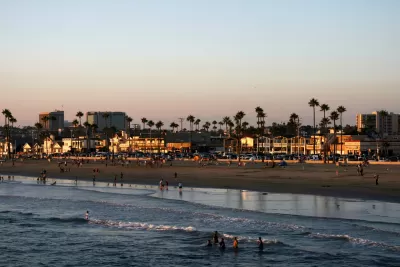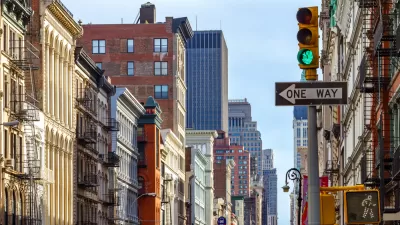A combination of factors including a lengthy appeals process and the cost of construction have led to huge disparities in the number of units allocated to each community.

A report from California's state auditor's office highlighted the disparity in affordable housing requirements for different cities, calling the state's approach ineffective and suggesting that the state "improve its statewide housing plan, harmonize its funding programs, and strengthen its oversight of local jurisdictions."
In the eight years leading up to 2021, California "allocated the city of Newport Beach a total of two units of affordable housing," reports Nigel Duara for Cal Matters. Lake Forest, a city of comparable size and population, was allocated 1,097 units. In the same amount of time, Beverly Hills was allocated three units, while Coachella was allocated 2,614. Because local jurisdictions can lobby to change their allocation during the planning stages, "rich cities have been able to build far less affordable housing units than their inland and less-wealthy counterparts."
Regional housing commissions are now using a new allocation process aimed at more equitably distributing housing units. In the most recent cycle of affordable housing allocation, Newport Beach received 4,834 units. Proponents for revised standards argue that despite high density and land costs, there is a strong need for affordable housing in central areas near transit and jobs. "The new formula skews toward more urban, with a focus on proximity to public transit — also part of a climate goal." Cities like Newport Beach have already started the appeals process.
FULL STORY: Newport Beach was supposed to build 2 affordable units in 8 years — why so little?

Planetizen Federal Action Tracker
A weekly monitor of how Trump’s orders and actions are impacting planners and planning in America.

Map: Where Senate Republicans Want to Sell Your Public Lands
For public land advocates, the Senate Republicans’ proposal to sell millions of acres of public land in the West is “the biggest fight of their careers.”

Restaurant Patios Were a Pandemic Win — Why Were They so Hard to Keep?
Social distancing requirements and changes in travel patterns prompted cities to pilot new uses for street and sidewalk space. Then it got complicated.

Platform Pilsner: Vancouver Transit Agency Releases... a Beer?
TransLink will receive a portion of every sale of the four-pack.

Toronto Weighs Cheaper Transit, Parking Hikes for Major Events
Special event rates would take effect during large festivals, sports games and concerts to ‘discourage driving, manage congestion and free up space for transit.”

Berlin to Consider Car-Free Zone Larger Than Manhattan
The area bound by the 22-mile Ringbahn would still allow 12 uses of a private automobile per year per person, and several other exemptions.
Urban Design for Planners 1: Software Tools
This six-course series explores essential urban design concepts using open source software and equips planners with the tools they need to participate fully in the urban design process.
Planning for Universal Design
Learn the tools for implementing Universal Design in planning regulations.
Heyer Gruel & Associates PA
JM Goldson LLC
Custer County Colorado
City of Camden Redevelopment Agency
City of Astoria
Transportation Research & Education Center (TREC) at Portland State University
Camden Redevelopment Agency
City of Claremont
Municipality of Princeton (NJ)





























